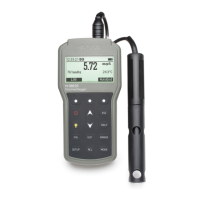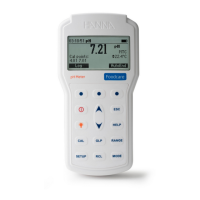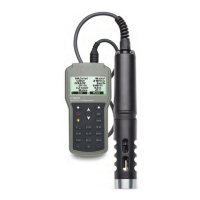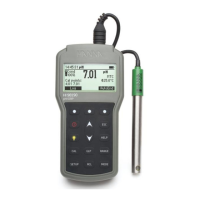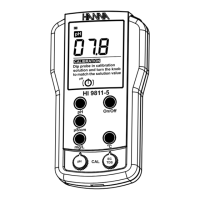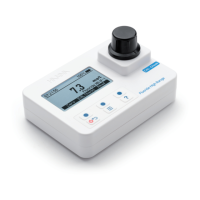82
• For chloride sensors (HI7609829‑11), if the sensor pellet appears tarnished, use a polishing
strip to remove the oxidized surface. Cut off approximately a 1 inch piece of the strip. Wet the
frosted side with water and place against damaged surface. Place your thumb against the shiny
backing and slowly rotate back and forth while applying gentle pressure. If dark deposits appear
on the frosted surface, move the paper slightly. Continue polishing until you are satisfied with the
surface. Rinse sensor with water.
The Hanna Instruments HI76X9829 has been designed for a variety of water quality measurements
both in situ or in active deployments in urban or natural waters. The HI9829 systems may be used
for discrete spot sampling with a meter and the meter’s log on demand function, unattended with
continuous monitoring and logging from the meter, or unattended using a logging probe. These
data are then downloaded to a meter or PC and can be plotted with logging software to obtain the
graphical log needed for interpretation of the essential physical property of the aqueous body of water.
In all of these deployment situations data quality is dependent upon the site location, service intervals,
amount of coatings, sedimentation and vegetation, and the actual installation. The probe may be
installed in a horizontal bank (fixed installation) or a vertical suspension. The maximum depth rating
of 20 m (65’) for the probe should be adhered to.
Note: Actual sensor specifications may be less.
The location must be accessible for the duration of the measurement (consider seasonal flooding,
freezing and other acts of nature) when selecting a site. Many conditions may affect the quality of
measurements. Select an installation site that is representative of the water body being monitored.
Avoid areas without adequate water circulation. To protect equipment it is best to avoid exposure
to wind, foam, turbulence, air temperature gradients/sun, extended periods of high flow, extended
periods of high sediment and floating debris. The standard operating procedures (SOP) for the data
gathering must be upheld. This typically includes pre and post deployment checks of the sensors to
validate data gathered between calibrations, upholding service intervals, and following any other
site‑specific procedures. Grab samples for laboratory analysis or spot sampling with another probe
are addition ways to validate the measurements taken by unattended continuous logging probes.
The probe is suitable for installation in confined locations such as air vaults, river intakes, vertical
wells, tanks, etc.. The streamline diameter of the probe permits insertion into 2” pipelines. Unlike
probes that require a cable support for active deployments the probe can be manually lowered and
raised by the cable due to it’s superior strength member.
It is suitable for installation in open moving waters; rivers, streams, ditches (farmland drainage),
conveyance canals, etc.. In these cases protecting the probe from debris is important. If the probe is
suspended from a pier or bridge position it behind a support and anchor the cable/probe to a pipe.
APPENDIX B - PROBE DEPLOYMENT
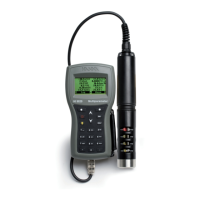
